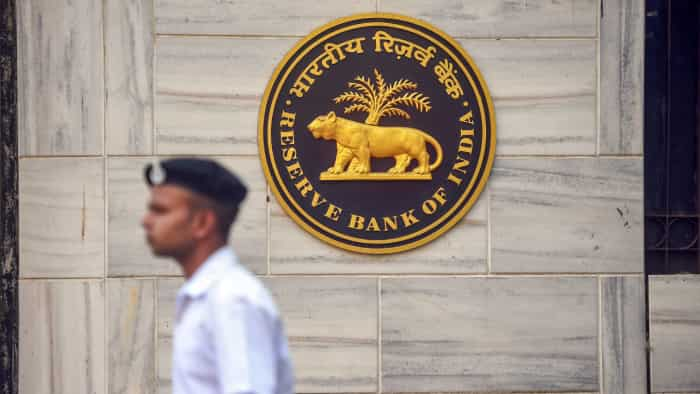Make most of National Pension System (NPS): Income per month calculator, maximum age, withdrawal, ITR benefit explained
National Pension System (NPS) is one of the most is an easily accessible, low cost, tax-efficient, flexible and portable retirement savings account.

National Pension System (NPS) is an easily accessible, low cost, tax-efficient, flexible and portable retirement savings account. Effectively, it's a retirement plan for all. NPS was launched in 2004 to provide retirement income to all the citizens. Though initially, only new government recruits (except armed forces)were eligible to get NPS subscription, it was made available to all citizens, including those working in the unorganised sector, with effect from 1st May 2009. NPS investment is independent of your subscription to any other pension fund. Every individual NPS subscriber gets a Permanent Retirement Account Number (PRAN) card and has a 12 digit unique number.
National Pension System (NPS) eligibility
Any citizen of India, whether resident or non-resident, can subscribe to NPS. However, they will have to be aged between 18 – 65 years as on the date of submission of his/her application to the Point of Presence. The citizens can join NPS either as individuals or as an employee-employer group(s) (corporates) subject to submission of all required information and Know your customer (KYC) documentation.
- An NRI can open NPS account but her/his contribution will be subject to regulatory clearance by RBI and FEMA. Such an account would close if the citizenship status of the NRI changes.
National Pension System (NPS) maximum Age
After attaining 60 years of age, subscribers will not be permitted to make further contributions to the NPS accounts.
National Pension System (NPS) income per month calculator
You can calculate income per month return post-retirement here: https://www.hdfcpension.com/nps-calculator.html
NPS account opening process
NPS subscription can be made at authorised entities called Points of Presence (POPs). Almost all banks, and several other financial institutions are authorised to act as the POP under NPS. To invest in NPS, open an account through the POP. You can locate your nearest POP here - https://www.npscra.nsdl.co.in/pop-sp.php
- Documents required: Completely filled in subscriber registration form; Proof of Identity; Proof of Address; Age/date of birth proof.
National Pension System (NPS) withdrawal
Once a person retires, at least 40% of her/his accumulated wealth is utilized for the purchase of an annuity providing for the monthly pension of the subscriber. The balance is paid as a lump sum. If someone retires or does not want to continue in the NPS before age 60, at least 80% of accumulated pension wealth of the person is utilized for the purchase of an annuity providing for the monthly pension; balance 20% is paid as a lump sum.
If the subscriber unfortunately dies, the entire accumulated pension wealth is paid to the nominee/legal heir of the person.
To withdraw NPS benefits, submit a withdrawal application form to the concerned POP along with the following documents:
1. PRAN card in original; Attested copy of Proof of Identity (e. g. Passport, Aadhar Card, PAN Card, Valid Driving License, Voter ID Card etc.);.Attested copy of Proof of Address (e. g. Passport, Aadhar Card, Valid Driving License, Voter ID Card etc.); Cancelled cheque (containing Subscriber Name, Bank Account Number and IFS Code) or Bank Certificate Containing Name, Bank Account Number and IFSC code, for direct credit or electronic transfer.
Watch: National Pension Scheme analysis
National Pension System (NPS) Income Tax Return (ITR) benefit
Individuals, who are employed and contributing to NPS, enjoy tax benefits on their own contributions as well as their employer’s contribution as under:
(a) Employee’s own contribution - Eligible for tax deduction up to 10% of Salary (Basic + DA) under Section 80 CCD(1) within the overall ceiling of Rs. 1 lac under Sec 80 CCE.
(b) Employer’s contribution – The employee is eligible for tax deduction up to 10% of Salary (Basic + DA) contributed by the employer under Sec 80 CCC(2) over and above the limit of Rs. 1 lac provided under Sec 80 CCE.
Self-employed individuals are eligible for tax deduction up to 10 % of gross income under Sec 80 CCD (1) within the overall ceiling of Rs. 1 lac under Sec 80 CCE.
(With inputs from Pfrda.org.in)
Get Latest Business News, Stock Market Updates and Videos; Check your tax outgo through Income Tax Calculator and save money through our Personal Finance coverage. Check Business Breaking News Live on Zee Business Twitter and Facebook. Subscribe on YouTube.
RECOMMENDED STORIES

Power of Rs 15,000 SIP: How long it will take to achieve Rs 7 crore corpus? See calculations to know

Latest SBI Senior Citizens FD Rates: What will you get on maturity if you invest Rs 9,89,898, Rs 8,78,787, and Rs 6,56,565 in Amrit Vrishti, 1-, 3-, and 5-year FDs?
04:35 PM IST









 NPS Retirement Planning: How to build Rs 5 crore corpus and get over Rs 1.46 lakh pension at retirement; get expert calculations
NPS Retirement Planning: How to build Rs 5 crore corpus and get over Rs 1.46 lakh pension at retirement; get expert calculations Top 5 NPS Mutual Funds with Highest SIP Returns: Rs 10,000 monthly SIP in top fund has given Rs 28.50 lakh in 10 years
Top 5 NPS Mutual Funds with Highest SIP Returns: Rs 10,000 monthly SIP in top fund has given Rs 28.50 lakh in 10 years NPS Calculation: Want Rs 60,000 monthly pension by investing for 25 years? Here is how much money you need
NPS Calculation: Want Rs 60,000 monthly pension by investing for 25 years? Here is how much money you need How to set up an NPS account online: A step-by-step guide
How to set up an NPS account online: A step-by-step guide EPF vs NPS: Which is a better option?
EPF vs NPS: Which is a better option?